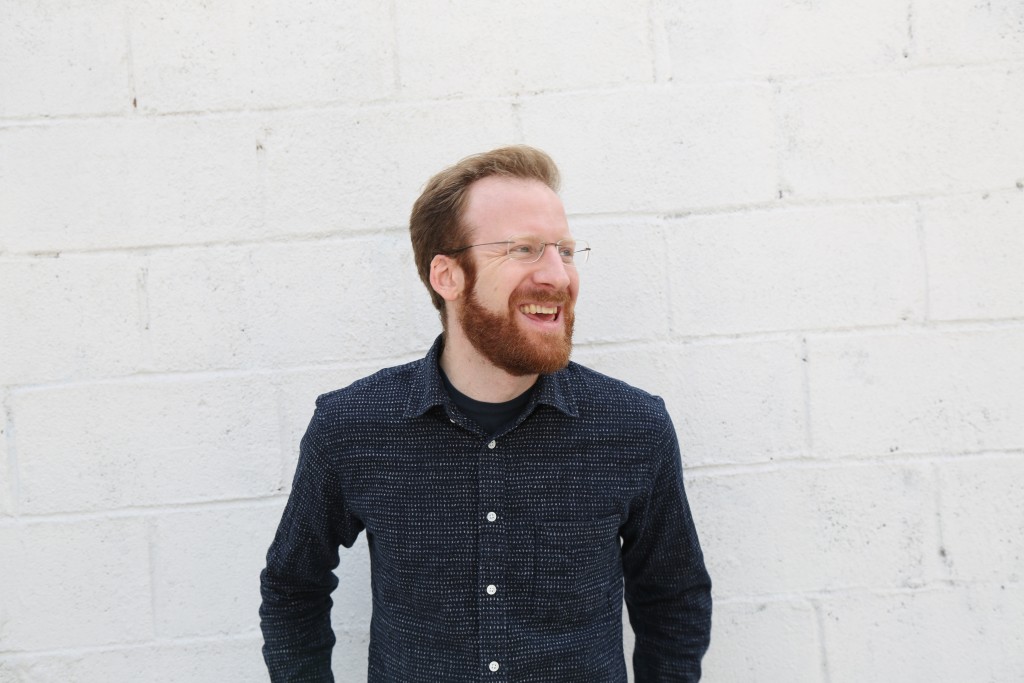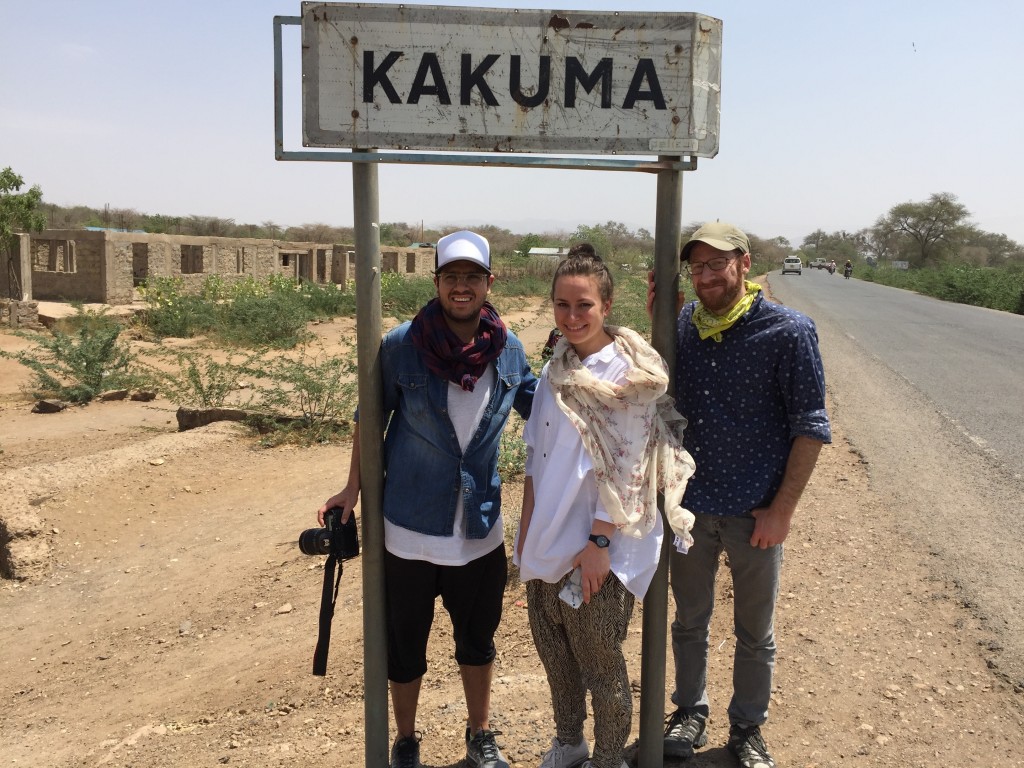First-Year Alumni: Owen collaborates — from Fletcher to new career
Returning to the Class of 2015, Owen Sanderson was a two-year Admissions Office regular, spending time in the office as a volunteer, a paid member of the Admissions Committee, and a good source of conversation. He was the first person I reached out to when I was looking for a helper for an APSIA graduate school fair in New York last September, and he’s the only student with whom I ever discussed options for engagement rings before he proposed. His post-Fletcher career is typical in that it’s atypical.
“Don’t try to be the smartest person in the room,” cautions Paul Bennett the Chief Creative Officer of IDEO. “The conventional heroic leader is a product of the past.” Cleverness is not a ticket to success at IDEO.
Paul is right. Despite the deep well of talent at my new employer, IDEO.org, I’ve observed that success here is fueled by one pervasive approach: a commitment to collaboration.
TODAY
 I write as I embark on my fifth month at IDEO.org’s New York office. IDEO.org is a non-profit design and innovation organization associated with its celebrated Silicon Valley brother IDEO. As a Business Designer — a unique role that blends business sensibilities with thoughtful design — I have seen firsthand how collaboration inspires seriously impressive results. But this isn’t necessarily news to me, as group work is part and parcel of life at The Fletcher School.
I write as I embark on my fifth month at IDEO.org’s New York office. IDEO.org is a non-profit design and innovation organization associated with its celebrated Silicon Valley brother IDEO. As a Business Designer — a unique role that blends business sensibilities with thoughtful design — I have seen firsthand how collaboration inspires seriously impressive results. But this isn’t necessarily news to me, as group work is part and parcel of life at The Fletcher School.
Between 2013 and 2015, I spent two years at Fletcher preparing myself for a pivot into the design world. Unconventional? Perhaps. Effective? Definitely. I have always had a decent grasp of international development, having studied it at Georgetown University and having worked in the field for nearly a decade. However, Fletcher offered an opportunity to consider a contemporary approach to problem solving: Human Centered Design (HCD). HCD is a creative practice that focuses on people rather than process. The goal of HCD is to research, design, and build solutions, all while maintaining deep empathy for the women and men you’re designing for.
As a Business Designer I look to design solutions that aren’t just beautiful but viable in the emerging markets in Africa and Asia where IDEO.org works. Life as a Business Designer takes many forms — from conducting user research to considering a market entry strategy for a new social enterprise to building partnerships with local NGOs to ensure programmatic sustainability. It is exciting, fast-paced, and challenging.
BEFORE FLETCHER
So how did I navigate to this sweet spot between design and development? My journey started at the Center for Strategic & International Studies (CSIS) in Washington, DC. CSIS was hands-down the best first job out of college. I highly recommend spending at least a few years at a DC think tank. You’ll learn to write. You’ll participate in incredible events. You’ll have access to world-class personalities. And you may even work down the hall from former statesmen Henry Kissinger and Zbigniew Brzezinski (I did!). Perhaps most importantly, it was through this job I also met my future wife. We get married in July—and I am positively joyful.
Following two years at CSIS, I sought to tone my quantitative muscles. Management consulting called. I spent three years at Deloitte Consulting, working alongside clients from USAID, the State Department, and beyond. I dedicated my last year at Deloitte to an internal project that examined the intersection of government, the private sector, and this new thing called social entrepreneurship. I cannot thank Deloitte partner Bill Eggers enough for exposing me to such interesting work.
AT FLETCHER
After five years away from school, I felt the pull. Fletcher called. I distinctly remember visiting the Hall of Flags as a high school junior on a college tour with my mom. I remember being inspired. How was I to know that ten years later I would be a temporary fixture in the Hall myself, particularly during Social Hour — Fletcher’s weekly gathering of minds and hungry grad school bellies.
At Fletcher, I focused on reconsidering the international development sector, uncovering new, innovative ways to tackle thorny poverty challenges. I was attracted to courses like Kim Wilson’s Financial Inclusion and Bhaskar Chakravorti’s Strategy & Innovation in the Evolving Context of International Business. I refined my consultative approach in Rusty Tunnard’s Field Studies in Global Consulting — and then served as his teaching assistant during my second year. And I put theory to practice by spending my Fletcher summer in Nairobi, Kenya at the iHub, a co-working and innovation collective. While there I wrote my capstone on Nairobi’s tech ecosystem and then taught this capstone to Kim Wilson’s class in 2015. Both my internship and my capstone propelled me into my current gig as a Business Designer.
AFTER FLETCHER
And so now I’m at IDEO.org. It’s tough. It’s dirty. But it’s oh-so-rewarding. Last month I spent two weeks in Kakuma, Kenya, a 24-year-old refugee camp with approximately 185,000 residents. Read that sentence again. A refugee camp. A 24-year-old, temporary place of sanctuary. But nothing is temporary in Kakuma. It is a permanent city. Our team touched down in Kakuma to rethink (and frankly, redesign) how refugee teachers access professional development services. With average class sizes of over 100 students and a serious lack of material resources to support teaching, these refugee teachers are eager for support.
I went to Fletcher to learn how to solve big, hairy problems like those I saw in Kakuma. I am at IDEO.org to solve them. However, a lone wolf won’t solve these challenges. As Paul Bennett said, the smartest person in the room won’t have the solution. Paul is not alone in this belief. He has advocates across the world, including in Kakuma. During our second week in the refugee camp, a teacher suggested that problems in the camp are never resolved alone: “We work as a team. No one is cleverer.” From Medford to New York to Kakuma, collaboration appears to be the name of the game.
